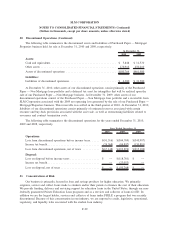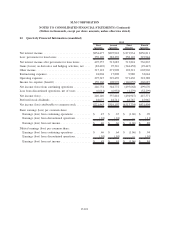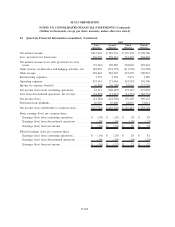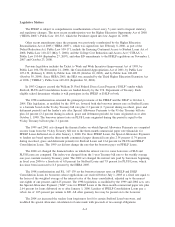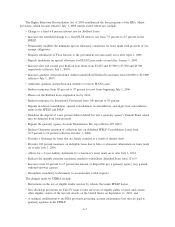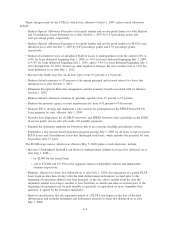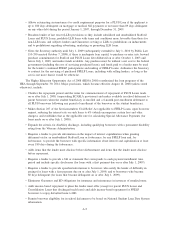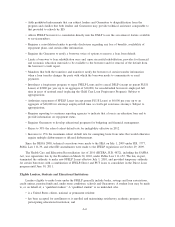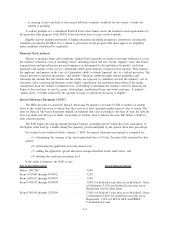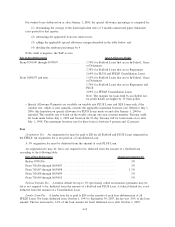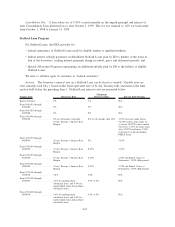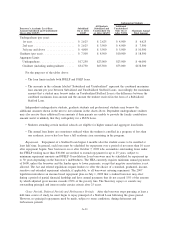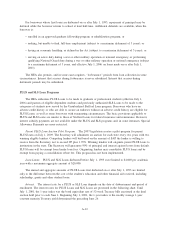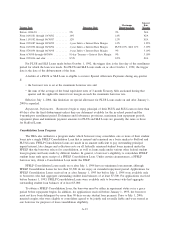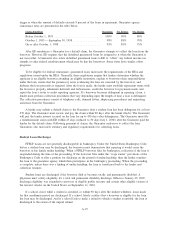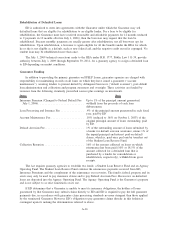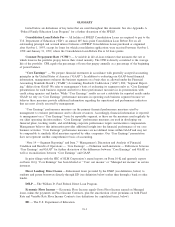Sallie Mae 2010 Annual Report Download - page 212
Download and view the complete annual report
Please find page 212 of the 2010 Sallie Mae annual report below. You can navigate through the pages in the report by either clicking on the pages listed below, or by using the keyword search tool below to find specific information within the annual report.
• is carrying at least one-half of the normal full-time academic workload for the course of study the
student is pursuing.
A student qualifies for a subsidized Stafford Loan if his family meets the financial need requirements for
the particular loan program. Only PLUS Loan borrowers have to meet credit standards.
Eligible schools include institutions of higher education, including proprietary institutions, meeting the
standards provided in the HEA. For a school to participate in the program, ED must approve its eligibility
under standards established by regulation.
Financial Need Analysis
Subject to program limits and conditions, student loans generally are made in amounts sufficient to cover
the student’s estimated costs of attending school, including tuition and fees, books, supplies, room and board,
transportation and miscellaneous personal expenses as determined by the institution. Generally, each loan
applicant (and parents in the case of a dependent child) must undergo a financial need analysis. This requires
the applicant (and parents in the case of a dependent child) to submit financial data to a federal processor. The
federal processor evaluates the parents’ and student’s financial condition under federal guidelines and
calculates the amount that the student and the family are expected to contribute towards the student’s cost of
education. After receiving information on the family contribution, the institution then subtracts the family
contribution from the student’s estimated costs of attending to determine the student’s need for financial aid.
Some of this need may be met by grants, scholarships, institutional loans and work assistance. A student’s
“unmet need” is further reduced by the amount of loans for which the borrower is eligible.
Special Allowance Payments (“SAP”)
The HEA provides for quarterly Special Allowance Payments to be made by ED to holders of student
loans to the extent necessary to ensure that they receive at least specified market interest rates of return. The
rates for Special Allowance Payments depend on formulas that vary according to the type of loan, the date the
loan was made and the type of funds, tax-exempt or taxable, used to finance the loan. ED makes a SAP for
each calendar quarter.
The SAP equals the average unpaid principal balance, including interest which has been capitalized, of
all eligible loans held by a holder during the quarterly period multiplied by the special allowance percentage.
For student loans disbursed before January 1, 2000, the special allowance percentage is computed by:
(1) determining the average of the bond equivalent rates of 91-day Treasury bills auctioned for that
quarter;
(2) subtracting the applicable borrower interest rate;
(3) adding the applicable special allowance margin described in the table below; and
(4) dividing the resultant percentage by 4.
If the result is negative, the SAP is zero.
Date of First Disbursement Special Allowance Margin
Before 10/17/86 ............................ 3.50%
From 10/17/86 through 09/30/92 ................ 3.25%
From 10/01/92 through 06/30/95 ................ 3.10%
From 07/01/95 through 06/30/98 ................ 2.50% for Stafford Loans that are in In-School, Grace
or Deferment 3.10% for Stafford Loans that are in
Repayment and all other loans
From 07/01/98 through 12/31/99 ................ 2.20% for Stafford Loans that are in In-School, Grace
or Deferment 2.80% for Stafford Loans that are in
Repayment 3.10% for PLUS, SLS and FFELP
Consolidation Loans
A-7


